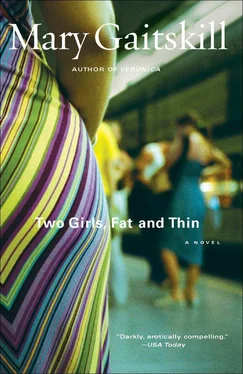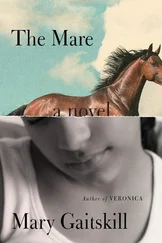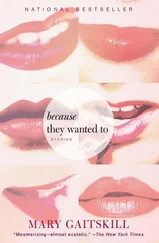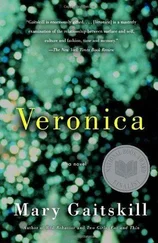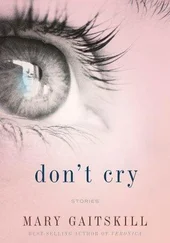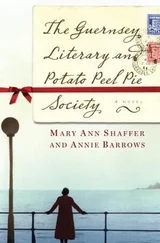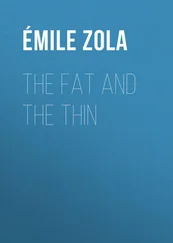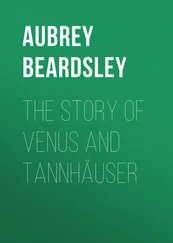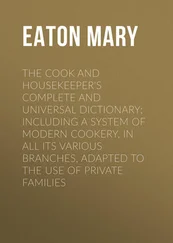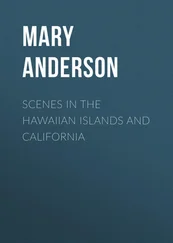Mary Gaitskill - Two Girls, Fat and Thin
Здесь есть возможность читать онлайн «Mary Gaitskill - Two Girls, Fat and Thin» весь текст электронной книги совершенно бесплатно (целиком полную версию без сокращений). В некоторых случаях можно слушать аудио, скачать через торрент в формате fb2 и присутствует краткое содержание. Год выпуска: 2012, Издательство: Simon & Schuster, Жанр: Современная проза, на английском языке. Описание произведения, (предисловие) а так же отзывы посетителей доступны на портале библиотеки ЛибКат.
- Название:Two Girls, Fat and Thin
- Автор:
- Издательство:Simon & Schuster
- Жанр:
- Год:2012
- ISBN:нет данных
- Рейтинг книги:5 / 5. Голосов: 1
-
Избранное:Добавить в избранное
- Отзывы:
-
Ваша оценка:
- 100
- 1
- 2
- 3
- 4
- 5
Two Girls, Fat and Thin: краткое содержание, описание и аннотация
Предлагаем к чтению аннотацию, описание, краткое содержание или предисловие (зависит от того, что написал сам автор книги «Two Girls, Fat and Thin»). Если вы не нашли необходимую информацию о книге — напишите в комментариях, мы постараемся отыскать её.
Review) create a haunting and unforgettable journey into the dark side of contemporary life and the deepest recesses of the soul.
Two Girls, Fat and Thin — читать онлайн бесплатно полную книгу (весь текст) целиком
Ниже представлен текст книги, разбитый по страницам. Система сохранения места последней прочитанной страницы, позволяет с удобством читать онлайн бесплатно книгу «Two Girls, Fat and Thin», без необходимости каждый раз заново искать на чём Вы остановились. Поставьте закладку, и сможете в любой момент перейти на страницу, на которой закончили чтение.
Интервал:
Закладка:
The rest of the day was divided into hours and rooms labeled “math,” “social studies,” etc. There were minutes of travel through teeming hallways and there was lunch. Of these divisions, I found the classroom hours the most painless because they were most controlled. I divided this time even further, first by the spaces between the clock’s numbers, then by the gestures and whispered conversations that took place without any words suddenly leaping out to injure me, then by the written exercises to be performed. Between these markers I toiled, slowly connecting one to the other. The moments in the halls were horrible because they were not divisible and because I was exposed to a striding, grinning, shouting chaos of people, many of whom possessed an unbearable youthful beauty, all of whom were connected to each other by feelings and conversations I could not understand, people with whom I could never connect, except when someone screamed, “Look! It’s Twiggy!” Lunch was less jarring, but, after I got through the various points in the line, there was no way to mark off my existence, and for a full half hour I was skewered by the sight and sound of others celebrating their youth and vitality. I began to eat my Choco Chunk bars and french fries in the bathroom in the company of two or three girls with nests of hair, threadbare skirts, and leather jackets. They drooped on the wall, put on lipstick, teased their hair, and smoked cigarettes, languorously blowing the smoke ceilingward as they talked about their boyfriends or how much they hated someone. I still remember, with useless clarity, the large pink bump that one of these girls had at the corner of her nose, a pimple that was always inflamed and set off by a delicate circle of orange makeup at its base.
The most rigid pattern was not the one imposed by the school system or the adolescent social system. It was the pattern I made of the people around me, a mythology for their incomprehensible activity, a mythology that brought me a cramped delight, which I protected by putting all possible space between myself and other people. The boundaries of my inner world did not extend out, but in, so that there was a large area of blank whiteness starting at my most external self and expanding inward until it reached the tiny inner province of dazzling color and activity that it safeguarded, like the force field of clouds and limitless night sky that surrounded the island of Never-Never Land. My mythology was based on images rather than words because I could not generally understand the conversation around me. A cluster of girls would sit behind me on the floor in the echoing hollow of the gym and say things about clothing — what they wanted to buy that spring, how much they liked pink or paisley or lacy cuffs, how cute Leslie’s dress was, as opposed to how ugly Kitty’s dress was (sometimes engaging in subtle battles over whether or not someone was acceptable through an exchange concerning her clothes) — what someone’s boyfriend did to her the night before, or a television program. Then suddenly, one of them would bite out, “Oh God, we don’t want that ugly scuz on our team,” or some other comment that I could not associate with dresses or television programs. It seemed to me that the rest of the conversation had been a mere basket for the snake of cruelty coiling under the banal weave of words.
Yet I knew that these were nice girls. I sensed that if their mundane words covered cruelty and aggression, the cruelty and aggression covered other qualities. Vulnerability, tenderness, curiosity, kindness — I sensed these qualities in the child harridans around me, yet I could not experience them. Even more bewildering, it seemed that they did not experience them either. Perhaps this was because these softer feelings were so immature, so frail, and, if allowed their full measure of expression, so potentially unbearable that the girls instinctively protected their gentleness with impenetrable harshness, unconsciously fearing it would otherwise not survive. If this were true then the rigid and complex social structure they adhered to, with its confusing rules of dress and conduct, must be a code for the deeper reserves that lay beneath, and thus, if this code were cracked, it would allow access to that friendliness and compassion I saw them sporadically express. So I listened desperately and tried to understand the code. But I could not do it, and on the rare occasion that someone spoke to me, I was struck dumb by trying too hard to discover the correct response. Either that or, having stood within earshot of a conversation on the cuteness of a particular TV show or the sluttiness of a heavily madeup twelve-year-old, I would blurt out a comment that seemed to me very like everyone else’s comments and be met with stares of incomprehension.
Thus the mythology.
There was a delicate underweight girl named Emma Contrell with round gray eyes painted stormily black and blue, and a curly bunch of short peroxide hair that made her small head heavy on her slight neck. She sighed and walked with her shoulders hunched and her arms held inward. She belonged to an elite band of girls who wore too much makeup and short skirts. They drank and smoked cigarettes and went to parties with seventeen-year-olds. They were gossiped about, envied, and feared. Emma was the frailest and dreamiest of these girls; even her vicious taunting of the wretched lone “special education” student was giddy and whimsical. She had a bad reputation with the other girls for being a “nympho” and she would’ve been outcast if she hadn’t been protected by her formidable friends. I saw her lingering in the halls or in the parking lot with one large lumbering lad after the next; their big bodies and limbs seemed to menace Emma merely by close proximity to her. Emma always appeared to be under some terrible stress; she carried a large bottle of aspirin with her, her hands trembled, she had urgent whispered conversations with her friends in the toilet stalls. I sat behind her in math, and I once heard her whisper to the lewd, snide child next to her, “Don’t you think Mr. Johnson has a fab bod?” Her voice was tiny and sharp, like an especially foolish bird. I decided from that moment on that Emma was in love with the cheaply suave math teacher and that she was involved with her apish series of boyfriends simply to kill her miserable passion under their stampeding bodies. But no matter how ardently they felt her up in the parking lot, her arched neck and open lips were not for them. Their fumbling paws only provoked her bitter longing for the math teacher until one day after school she put her hand on his thigh and gazed at him sorrowfully with her huge smudged eyes. He gloatingly took her hand and led her out to his car. He took advantage of the romantic child, enflaming her love and driving her to acquiesce even more frantically to her parking lot swains in an effort to divert public attention from her real love, in order not to destroy his family life and position, which he had warned her could happen. She was promiscuous also because he loved to hear her talk about her adventures in his overheated car.
I felt a throb of admiration every time I saw little Emma in the bathroom, her hands trembling as she applied pink lipstick to her plump lips. I pictured her clinging to the rutting math teacher in the back seat of his car, her face abandoned to love and despair, and I forgave her everything, even her cruelty, even the time she tripped my polio-crippled friend, poor dull defenseless Donna Doe.
I was astonished to hear one day, while sitting quietly on a toilet, a whispered conversation about the scandal at Bev Pawler’s pajama party, when Emma was found kissing Mona Prescott. I was taken aback only for a moment; then my loyalty and devotion swelled like an infected gland. I imagined Emma and Mona Prescott (a coarse girl with pockmarked skin and blank, intent brown eyes, who once remarked, as Miss Vanderlust, the bowlegged gym teacher, relegated me to an unwilling volleyball team, “Oh no, not that fat weirdo”) gazing passionately into each other’s eyes. I imagined Emma, scorned by the boys who had used her, rejected by the math teacher, tormented by rude phone calls in the night. I imagined Emma crouched in her underwear, sobbing on the floor of the deserted gym class locker room. Mona’s concerned face would appear from behind a row of lockers. “Hi. Wanna go for a swim?” They swam in the deserted pool, moving under the water in slow rippling bands of light. Mona, the stronger one, led the way. In my mythology, she had a large red flower tattooed on her inner thigh, exposed like a betrayed secret. Emma watched the flower through the rippling water and wondered how she could’ve overlooked it before.
Читать дальшеИнтервал:
Закладка:
Похожие книги на «Two Girls, Fat and Thin»
Представляем Вашему вниманию похожие книги на «Two Girls, Fat and Thin» списком для выбора. Мы отобрали схожую по названию и смыслу литературу в надежде предоставить читателям больше вариантов отыскать новые, интересные, ещё непрочитанные произведения.
Обсуждение, отзывы о книге «Two Girls, Fat and Thin» и просто собственные мнения читателей. Оставьте ваши комментарии, напишите, что Вы думаете о произведении, его смысле или главных героях. Укажите что конкретно понравилось, а что нет, и почему Вы так считаете.
